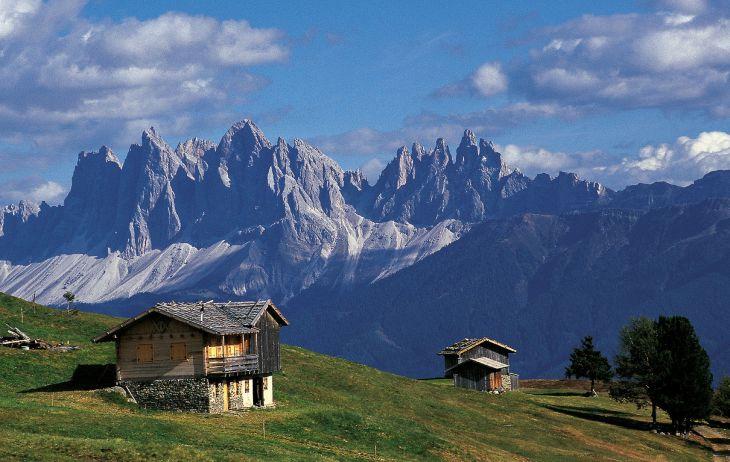The concept of the sublime that developed in the eighteenth century found a perfect manifestation in the breathtaking beauty discovered in the Dolomite mountain range, say landscape professionals.
''The first images of the Dolomites were not paintings but descriptions. The opening phrases of the scientific reports and travelogues that introduced the Dolomites to the world at the beginning of the 1800s were not drawings but words describing extraordinary visions and the strong emotions they called forth'', said Loredana Ponticelli, curator of a show on the mountain range.
The landscape architect worked with her colleague Cesare Micheletti to organise the 'Dolomiti' exhibition, open until September 6 at the Centre for Contemporary Art in Cavalese, in province of Trento.
The show is being held as the Dolomites' nomination to become a United Nations World Heritage Site is being considered by the World Heritage Committee in Seville, Spain.
The mission to preserve heritage considered to have outstanding value to humanity is carried out by the committee, scheduled to rule on the Dolomite bid by the end of June.
Nine mountain groups have been selected as representative of two UNESCO criteria: superlative natural phenomena or natural beauty and aesthetic importance and outstanding examples representing major stages of the earth's history.
''For the eighteenth century Romantics the images of the Dolomites provoked a mental shock - a metaphysical image was suddenly embodied in a physical reality - which then became a benchmark for the aesthetic appreciation of nature. This is why the Dolomites are considered a universal value and an important model for defining natural beauty'' said Ponticelli.
Italian poet Giosue' Carducci's 'Ode to Cadore' describes the rays of the setting sun turning the Marmolada mountain's pale pinnacles into a rose-coloured shinning palace of dreams, an Elysium of spirits and fairies.
Writer Dino Buzzati, a Belluno native, who set many of his books in the Dolomites, wrote ''What colour are they? What adjective could describe that colour? Every time I go back and see it I get such a jolt. More than a colour, it's an essence, a diaphanous substance that takes on strange reflections at dawn and dusk grey, silver, pink, yellow, purples and reds, violet, blue, sepia, but it's always the same, like a human face that doesn't change even if the skin is pale or sunburned''.
Amelia B. Edwards' historical travel diary 'Untrodden Peaks and Unfrequented Valleys' from 1872 reads, ''you notice right away that they are different from any other mountains but at the same time they are exactly what you imagined''.
John Murray's Handbook for Travellers in Southern Germany written in 1837 says, ''The Dolomites differ greatly from all the other mountains for their blinding whiteness, their arid sterility, the innumerable clefts and crevices crossing their massive vertical walls. Rising up thousands of feet in the air, their sharp peaks and serrated ridges create especially picturesque profiles''.
Josiah Gilbert and George Cheetham Churchill, the authors of 'The Dolomite Mountains', published in 1864, wrote ''a mountain, presented endways to the descent, took the likeness of an apse to some enormous cathedral; and lower still we were in doubt for a time whether a wooded ridge were not really crowned by the ruined walls of an abbey, till their real magnitude became indisputable''.




